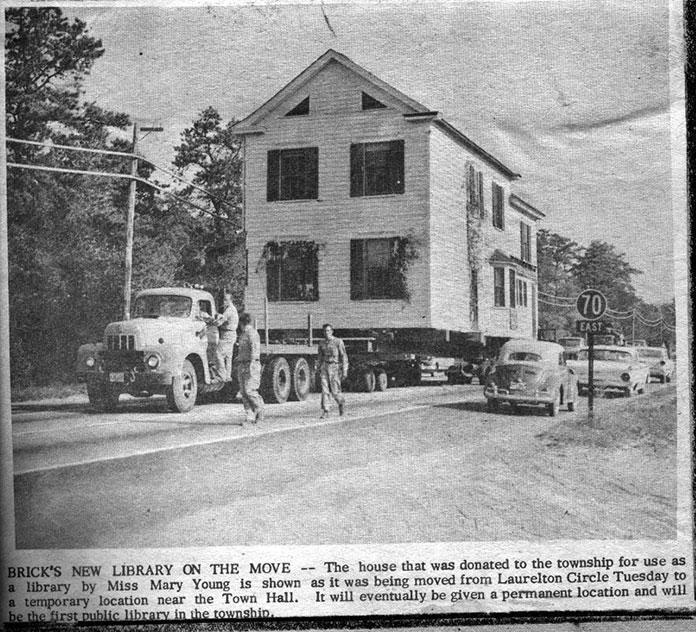
BRICK – In 1900, the township population was 2,130, and just a century later, the number of residents jumped to 76,119, according to the U.S. census.
More people means a higher demand – and a greater supply – for housing, energy, transportation, food and other goods.
The Brick Historical Society welcomed guest speaker, Brick Historian Gene Donatiello, to its January meeting who presented “Brick Township Business Today and Yesterday.”

Before the township existed, Native Americans, the Lenni Lenape, were among those who came to the area for oysters, clams, fish and hunting. They left behind artifacts and tools, and an archeological site was discovered at the Havens Homestead, the Metedeconk and other local areas.
Whalers came in the 1690s, and Brick later became a center of trade for sea captains. By the 1730s, the Lenni Lenape had largely begun moving westward, the first Europeans settlers arrived around 1740, and they established iron forges, sawmills and fisheries.
The Township of Brick was created in 1850 at a time when it was made up of small villages – Adamston, Burrsville, Herbertsville, Mantoloking and others.

Early businesses in Brick included lumber production, the iron business, such as Butcher’s Forge and Bergen Iron Works, cranberry farming, charcoal and turpentine production and poultry farming.
The Laurelton traffic circle, created in 1936, was named after Laurelton Farms, which at the time was the largest poultry farm in the state, which incubated 48,000 eggs at a time and supplied supermarkets in New York City.
Most residents did their shopping at general stores located in Laurelton, Herbertsville, Osbornville and Adamston.
During his PowerPoint presentation, Donatiello showed before and after photos of some well-known shopping areas in town, including the former Foodtown site. The current reconstruction of the property will house a sports dome and retail stores, but it has been the site of a Wetson’s cheeseburgers, a discount department store called Family Circle, Bradlees, and of course, Foodtown.

A horse farm called Bill’s Ranch, which boarded and rented out horses and ponies, was replaced by Maple Leaf Condominiums on Herbertsville Road.
Brandywine Assisted Living on Route 88 West had been R&R Poultry Farm, which sold fresh and barbecued chicken, turkey, ducks, capons and fresh eggs.
The aptly-named Town Hall Shoppes at the corner of Brick Boulevard and Cedar Bridge Avenue was the one-time location of Town Hall and the township’s first library.
Some of the homes of the township’s founding families were demolished or relocated to make room for strip malls, such as the Emma Havens Young home, located at the Laurelton Circle near the IHop restaurant.

Brick had an airport on Drum Point Road in Osbornville, but it was destroyed by a fire in 1953 and owner Bruce Huppert built a housing development in its place, called Sky Manor.
In the 1950s, the Garden State Parkway opened, resulting in an influx of new residents. General stores were replaced by department stores, supermarkets and specialty shops.
In 1958, Brick Plaza opened at the site of a cranberry bog. The nearby Harbor Freight had been a three-screen movie theater.
Recent construction includes a new Wawa convenience store and gas pumps, which displaced the front of the Laurelton Mobile Home Park on Route 88.

The nearby Royal Farms replaced Jersey Paddler which replaced a Sunoco gas station, all located at the same site at the intersection of Route 70 and Route 88.
“Since 1850, Brick Township has evolved from the virgin woodlands to the thriving suburban community it is today,” Donatiello said.






